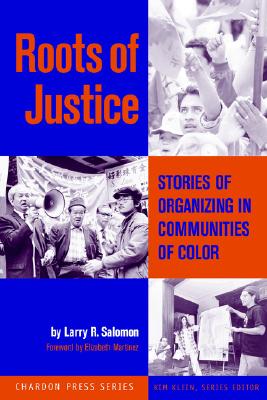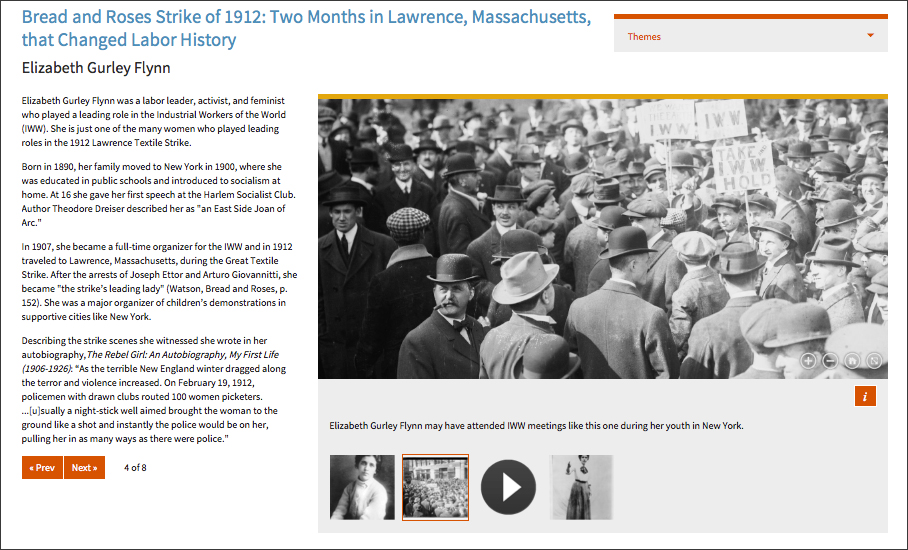Book — Non-fiction. By Michele Bollinger and Dao Tran. 2012.
A collection of 101 brief and accessible profiles of rebels, radicals, and fighters for social justice.
Continue reading
Digital collection. Records of the Voice of Industry newspaper, published by young women in Lowell, Mass. from 1845-1848.
Continue reading
Book — Non-fiction. By Larry Salomon. Introduction by Kim Klein. 1998. 176 pages.
Stories of people who fought back against exploitation and injustice — and won.
Continue reading
Digital collection. Information and resources on the 1934 truckers strikes in Minneapolis, Minnesota.
Continue reading
Book — Non-fiction. By Bill Fletcher Jr. 2012. 224 pages.
Scholar and labor organizer Bill Fletcher Jr. unpacks the 21 myths most often cited by anti-labor propagandists.
Continue reading
Digital collection. Digital photo collection of the Bread and Roses Strike of 1912.
Continue reading
Book — Fiction. By Lynn Rubright. 2008. 89 pages.
Historical fiction inspired by incidents in the early life of sharecropper Owen Whitfield, the organizer of the Southern Tenant Farmers Union.
Continue reading
Book — Non-fiction. By Leo Huberman, illustrations by Thomas H. Benton. 1932. 371 pages.
A people's history of labor with charts, diagrams, and illustrations.
Continue reading
Book — Non-fiction. By Robert Forrant and Susan Grabski. 2013. 128 pages.
Images, documents, and quotes tell the story of the 1912 landmark strike.
Continue reading
Book — Non-fiction. Edited by William Loren Katz and Laurie R. Lehman. 2003. 304 pages.
First-person narratives in the context of their times and within the larger picture of U.S. growth and development.
Continue reading
Teaching Activity. By Bill Bigelow and Norm Diamond. 8 pages.
Lesson engages students in a lively simulation that helps them experience some of the pressures that lead workers to organize.
Continue reading
Teaching Activity. By Bill Bigelow and Norm Diamond. 3 pages.
This lesson introduces students to Bertolt Brecht’s poem, A Worker Reads History. Students reflect on the creative role of workers in making history.
Continue reading
Teaching Activity. By Bill Bigelow and Norm Diamond. 7 pages.
This lesson teaches some of the nuts and bolts of labor unions and then moves beyond to ask students to consider what rights they have at work, and to recognize that “rights” depend in large part on what people have fought for and won.
Continue reading
Teaching Activity. By Bill Bigelow and Norm Diamond. 4 pages.
In this simulation, students make paper airplanes to learn about the origins and effects of “scientific management”—owners’ attempt to capture workers’ skills and knowledge, and then to exploit that knowledge to reorganize work and cut costs by deskilling workers.
Continue reading
Teaching Activity. By Bill Bigelow and Norm Diamond. 6 pages.
Students work with a chapter from Milton Meltzer’s classic book, Bread and Roses, to see the impact of late 19th century factory work on workers’ home lives.
Continue reading
Teaching Activity. By Bill Bigelow and Norm Diamond.
This lesson uses Charlie Chaplin’s hilarious classic film, Modern Times, to help students think about the impact of “scientific management” on the workplace.
Continue reading
Teaching Activity. By Bill Bigelow and Norm Diamond. 8 pages.
In this playful activity, students utilize the principles of “scientific management” to restructure a burger joint—one that has been run a good deal more democratically and imaginatively.
Continue reading
Teaching Activity. By Bill Bigelow and Norm Diamond. 10 pages.
This role play activity on the famous 1892 Homestead Strike, explores the possibility of solidarity among workers of very different backgrounds and at different levels in the workplace hierarchy.
Continue reading
Teaching Activity. By Bill Bigelow and Norm Diamond. 7 pages.
Writing activity for students to complete the narrative of women workers striking at a glove-making factory, exploring possible outcomes.
Continue reading
Teaching Activity. By Bill Bigelow and Norm Diamond. 8 pages.
In this “mystery” activity, students receive clues and discuss some of the factors that contributed to the intensification of racism in the 1920s in the United States.
Continue reading
Teaching Activity. By Bill Bigelow and Norm Diamond. 20 pages.
Students “become” several of the social groups who participated in the 1934 Longshore Workers Strike — some of whom had to answer the question, “Which side are you on?”
Continue reading
Teaching Activity. By Bill Bigelow and Norm Diamond. 4 pages.
Activity for students to write from the point of view of one of the women featured in the film Union Maids.
Continue reading
Teaching Activity. By Bill Bigelow and Norm Diamond. 14 pages.
In this role play activity, students assume the roles of union members and attempt to figure out how to respond to a threatened plant closure.
Continue reading
Teaching Activity. By Bill Bigelow and Norm Diamond. 7 pages.
Students explore the power of songs to build solidarity and increase understanding. This is the final activity from Bigelow and Diamond’s labor history book, The Power in Our Hands, and draws on the other lessons.
Continue reading
Article. By Robert Forrant. 2013.
The author challenges the common myth that the Bread and Roses Strike was spontaneous.
Continue reading
























